No matter how many times you have seen photographs, the room at first sight-and second and thirdjostles and jolts the eye. Here, on a peaceful suburban London street, in his last home, is Sigmund Freud's study, the place where he spent his last year and where he completed his last book and where, on a September day in 1939, he died. In the warm domestic surround that summons up turn-of-the-century Vienna, here is the couch covered with a good Persian rug, and just behind it, the green armchair where Freud famously positioned himself to escape the patient's direct gaze. Here are photographs of friends and colleagues. Here are the well-used books of a man who read widely, deeply and ferociously-full sets of Goethe, Shakespeare, Balzac and Anatole France, a wall of volumes on archaeology.
And everywhere the astonished gaze wanders, here are emblems of the vanished past. Terra-cotta and bronze figures and fragments of figures throng the shelves. Mummy masks hang from a bookcase and lie under glass. Ancient Greek pots, Egyptian scarabs, Roman oil lamps, Sumerian seals that have survived for more than four millennia-forests of these things repose in serried ranks in vitrines. The cherished pieces crowd the edge of Freud's desk, an attentive, questioning audience. Squirreled away in drawers are still more objects, odds and ends too small or too difficult to display. Infinite riches in a little room you could say-these are Freud's antiquities, 2,300 of them by the best estimate. In the felicitous phrase of one of his biographers, "the archaeologist of the mind" had an unappeasable appetite for the entombed treasures of other times. The sturdy brick house at 20 Maresfield Gardens in Hampstead, in northwest London, became the Freud Museum in 1986. Last fall, a sampling from the collection began a 30-month tour of the United States, crisscrossing the country to settle for weeks at each of 13 galleries. (The exhibition schedule for this year includes the University of Colorado, Boulder, july 6-August 18; the University of Miami, Coral Gables, August 30-September 30; and the University of California, Irvine, November 11-December 16. In 1991, the show will be at Stanford University, Stanford, California, january 15-March 17; the New Orleans Museum of Art, April 21-june 3; the University of Michigan, Ann Arbor, june 28-August 16; the University of Houston, September 7-October 13; the jewish Museum, New York, November 7-February 18, 1992. In 1992, the show will be at Boston University, February 26-April 6. The exhibition is sponsored by CIBAGEIGY Pharmaceuticals and the National Endowment for the Arts.)
It is an elegant little show designed for the intimate spaces of smallish museums, a digestible portion of the art that absorbed this great man's attention and spare funds for more than 40 years. Entitled "The Sigmund Freud Antiquities: Fragments from a Buried Past," the exhibition was formally intended to mark the 50th anniversary of the death of the founder of modern psychiatry. More aptly, it celebrates his work and evokes his ideas and passions.
"The Freud Antiquities" consists of 65 pieces, embracing a range of ancient times and places that held Freud's interest. Not surprisingly, many of them represent humans or animals-gods and sages and magical figures that embodied the mythology of ancient religions. Aptly enough, the show usually begins with Eros and ends with Thanatos-visual examples of Freud's conclusion that civilizations evolved through the drive to live, struggling eternally against the urge to die. It offers a sphinx, whose mystery was fatally unriddled by Oedipus; the Theban king would, in turn, bestow his name on what Freud decreed was a universal force of infantile sexuality, the Oedipus complex. It displays a balsamarium, an Etruscan container for perfumed oil, a favored piece that sat on his desk. One side wears a female face, the other a male visage, a double image for this master of dichotomies who found dualities everywhere he looked, and who saw bisexuality as basic to human nature.
The show has surprises. It was to be expected that Freud would be drawn to Egyptian, Greek and Roman imagery mirroring Freudian ideas and theories. On the other hand, he also found his way to the less-familiar, less-fathomable art of the Orient. And if the symbolism of ancient human and animal forms compelled his interest, he could also allow himself to own beautiful old jars and bottles that reflect nothing more than the master glassmaker's art.
And he could be fooled. The exhibition cases house a few forgeries; two are the kind of pieces that the modern museum world labels airport art"-massmarketed souvenirs produced for tourists. Scattering a few fakes among the authentic works was a calculated gesture, an essential ingredient of this homage to the whole, complex persona-scientist, thinker, explorer of the human psyche, medical practitioner, humanist, family man and, rather touchingly, obsessive collector who, like collectors almost everywhere, would sometimes succumb to a longing for a questionable object simply because he loved it and had to have it.
The exhibition is the joint effort of Lynn Gamwell, director of the University Art Museum of the State University of New York at Binghamton, and Richard Wells, director of the Freud Museum in London. Modestly scaled though it is, "The Freud Antiquities" was meant to represent the full range of the collection, including trivia. As Gamwell explains, "We did not want it to be simply honorific; we wanted to reflect the fact that he made mistakes." Actually, the low end of the selection stops short of her co-curator's assessment; with charming candor, Wells is apt to tell a visitor to the museum that while Freud's esthetic sense was a good deal more refined than friends and family gave him credit for, he did wind up with "a certain amount of junk and tat."
It should hardly come as a surprise that Freud understood better than many collectors what his buying meant on the simplest level and in the most personal terms. It was "an addiction," he once told his personal physician, Dr. Max Schur, and it was rivaled in intensity only by his need for nicotine. Plainly, at least one of those habits was necessary to his sense of well-being. Cigar smoking afflicted him with cancer of the palate and, beginning with his first surgery in 1923, would ever after be a relentless cause of suffering. Collecting was, at least, a benign addiction. It offered the good doctor the kind of comfort known to everyone who has ever succumbed to the desire to buy something-as a reward, as an antidote to a spell of low spirits, as a remedy for boredom, as an amulet against anxiety.
Freud's attraction to objects of antiquity was layered with meanings, but there is a touching simplicity to his report on a purchase he made just after an especially unhappy medical episode. He had been fitted with a new artificial palate after yet another encounter with oral surgery. The prosthesis impaired his speech and put an end to his public lecturing; just inserting and removing it was a harsh effort. Reporting his medical news to his colleague and friend Max Eitingon, he wrote, "I got myself an expensive present today, a lovely little dipylon vase-a real gem-to fight my ill humor. Spending money is indicated not only for states of fear.)"
Freud bought his first art in 1896, about the time his ailing elderly father was not far from death, or possibly just after jacob Freud had died. No one is quite sure. If you share the Freudian view that there are no accidents or coincidences n human affairs, then explanations are in order. It has been suggested that buying copies of art he admired was both a way to console himself in a time of mourning and the representation of a kind of relief universally felt by a survivor.
The earliest purchases were replicas of sculpture of the Florentine Renaissance. Very soon after, Freud began to buy originals of classical sculptures. Like any serious collector, he was finicky about authenticity. Most of his purchases were checked out at the Vienna Kunsthistorisches Museum. If an authority concluded that a piece was a forgery, it was given away. But the experts were not always certain and not always correct.
Not surprisingly, Freud's partiality for remnants of the distant past was linked with powerful memories. Before his medical schooling had begun, he had absorbed and enjoyed a classical education; the old Greek and Roman civilizations and even-older cultures they drew from were familiar territories for him. It is hard to imagine the adult Freud coveting another man's triumph, but the contemporary figure he envied was Heinrich Schliemann who, in Freud's youth, found and began to dig up the lost city of Troy.
The objects Freud collected came from sunny lands that he loved or longed to visit, and they held a mysterious grip on his imagination. To a colleague, he once wrote of "strange secret yearnings" that rose up in him when he studied the art he owned. Perhaps, he said, these feelings stemmed "from my ancestral heritage for the East and the Mediterranean and for a life of quite another kind: wishes from childhood never to be fulfilled and not adapted to reality."
For the professional brethren, on the other hand, the significance and weight of Freud's collecting dwells in what the psychoanalytic literature calls "the archaeological metaphor." Freud began collecting his antiquities during the last decade of the past century, while he was in the process of self-analysis, the painful and meticulous exploration of his own unconscious. The effort would lead to a new method of dealing with emotional distress, to the science or art of psychoanalysis, to what has been more lightly described as "the talking cure." He would write and he would tell some of his patients that the search for suppressed memories they had launched, the effort to rummage through buried experiences "layer by layer," was not unlike the technique of excavating a buried city." The message to the patient was: dig. New York writer Helen Dudar, a frequent contributor to these pages, wrote on the drawings of Jasper Johns in the june 1990 SMITHSONIAN. Like the dualities in Freud's own ideas of human experience, the metaphor is at once relevant and beside the point. After all, what sensible man would assemble more than 2,000 objects for the sake of supporting analogy when a dozen would have made the point? Moreover, the Freud collection includes 100 fine pieces of antique glass; as the museum's Richard Wells points out, "there's no intellectual mileage in ancient glass." Freud bought steadily the way collectors often buy: for the joy of buying, for the pleasure and for the childlike, almost primitive sense of power that ownership of valuables evokes. Sometimes he bought in a way that fed another artery into his fantasy life. Searching the Hampstead study for material to be used in the exhibition, Lynn Gamwell pulled open a drawer and found it crammed with etchings and engravings, more than 50, many of them of archaeological sites, including an 18th-century Piranesi. There was little wall space left in Freud's study, but clearly he could not resist prints of digs that appealed to him. Treasure smuggled by a princess Colleagues and friends learned to look to Freud's interests. When a Roman cemetery was discovered buried under farmlands in central Hungary in 1910, Sandor Ferenczi, a fellow collector who practiced psychoanalysis in Budapest, shared the booty. Lamps and beads from the site were bought for Freud's collection. In later years, Princess Marie Bonaparte, who had been his analysas and and became an important friend and benefactor, seldom arrived from Paris without a prime piece. She was also willing to break the law on his behalf. When it looked as if he might have to leave the collection in Vienna, the princess smuggled out a treasured piece, the fine little figure of Athena that is in the show. In our time, the last knowledgeable witness of Sigmund Freud's buying habits was Robert Lustig, a small, round, rosy man who died last February at the age of 83. In Vienna, Freud was the first and, 13 years later, the final customer for his antiquities. As a boy, Lustig had haunted the galleries of ancient art at the Vienna museum. In 1925, at the age of 19, he somewhat reluctantly went to work in the family watchmaking shop. Still, he prowled the auction rooms and one day triumphantly came back with a bargain, a dozen Egyptian alabaster urns, miniatures no more than three inches tall. To his father's angry dismay, he pushed aside some watches in the window to make room for his find. There they were spotted by a passer-by, a small bearded man who walked into the shop to ask about them. He liked the price.
"Bring them to my house, and I will pay you there," he told the young man, fishing a card out of his pocket. The card announced he was Professor Freud, a name Lustig vaguely knew was famous. When Lustig arrived at the apartment at Berggasse 19 with the little urns, he was overwhelmed by the study: "I had never seen so many things in a private collection." He left with his money and the professor's instructions, "Whenever you find something, bring it up to me."
In a few years, Lustig had his own shop on Wieblinger Strasse. Although it was Freud's habit to route his dally walk through the commercial districts where he knew he would pass antique stores, Lustig usually brought his merchandise to Berggasse 19, sometimes waiting with patients in an outer room until Freud could see him. He came at least once a week and sold something nearly every time. In keeping with local custom, Freud always bargained; the price always came down a trifle. But he was not practiced at pretending indifference.
"When I saw on his face that he liked something very much," Lustig confided, "I charged him a little more. But he took me down anyhow."
Far from rich, Freud was usually a cautious buyer. Some of the money he used for antiquities was unexpected cash-fees paid by patients who knew that for an hour every afternoon Freud could be consulted without an appointment. But in Vienna in those days, collecting classical pieces was not an expensive hobby; the high-priced objects in the shops were from the Gothic, Renaissance and Baroque periods.
At least once, when he was short of cash and wanted something that Lustig was offering-"I have to have it!" Lustig recalled him exclaiming-a trade was arranged. The piece Freud longed for was an Egyptian coffin mask. He proposed that he pay half the price in cash and the remainder with pieces that were duplicates in his collection. "He opened a drawer, and it was full of Greek and Etruscan mirrors," Lustig recalled. The young dealer went off with three or four mirrors and a small prehistoric Greek terra-cotta figure, a seated monkey, which he took to the museum. The curator of the Grecian department gave him an Etruscan bronze in exchange for the piece and put the monkey on display in a glass cabinet of its own. Owning a piece of sculpture that warrants museum display of that kind would suggest that the owner had a better-than-fair eye for quality. Of course, Freud occasionally bought a fake; even museums wind up with fakes. To Lynn Gamwell, co-curator of the show, the quality of much of the collection is impressive. Still, friends and strangers tended to be patronizing about Freud's art interests. One of his major biographers, his colleague Ernest jones, was advised by Ernst Kris, an art historian who became an analyst, and by Freud's son, Ernst, an architect, to avoid the subject entirely. Since Freud had little esthetic appreciation, they argued, there could be nothing worthwhile to say. As a theoretician, Freud certainly was more interested in the role of an artist's fantasy life in the creation of art than he was in esthetics. Still, in the end, the explorer of the human unconscious seems to have thrown up his hands at the prospect of divining the secrets of creativity. "We have to admit," he wrote in his book on Leonardo da Vinci ". . . that also the nature of artistic achievement is inaccessible to us psychoanalytically."
Freud's written views on art nevertheless angered and disturbed a good many people, among them, famously, the distinguished British art critic Roger Fry. His supposition was that Freud did not understand the basic elements of esthetic pleasure-ideas of mass and line, light and shade, space and color. The pursuit of simple beauty In Freud's defense, Ernest jones wrote that there was evidence to show that he had "a keen sense of simple beauty, notably in the sphere of nature, and also that he had some capacity for esthetic appreciation." After all, jones argued, no one would have spent year after vacation year wandering through the art galleries of Italy without some feeling for the art and architecture he was encountering.
Freud's days were crowded. There were patients to be seen, books and papers to be written, professional meetings to be organized, defections of the once faithful to be dealt with, and hundreds of letters to be composed-in his final year in England, 880 reached friends and family and admirers. But there was always time for the collection.
Freud kept a journal, his Chronik," in which he briefly noted some daily events. The last Chronik, the only one to survive the move from Vienna, consists of 20 unbound foolscap sheets covering ten years-an odd document that museum scholar Michael Molnar is trying to explicate. There are perfectly clear, and chilling, comments. The final entry, on August 25, 1939, rePorts "War panic." And there are lines tinged with disappointment: "October 31, 1929, Passed over for the Nobel Prize." And there are tantalizing notes like John D. Rockefeller jr." Did he visit? Did he write? Molnar is still hunting for a clue. New pleasures every few months Freud seems never to have failed to note the acquisition of an important piece. Every few months, the Chronik reports a new pleasure. "Painted Chinese lady," says the entry for March 17, 1933. Ivory Buddha," he reports on May 7, 1934; coming as it did a day after his birthday, it could even have been a gift to himself. Isis with Horus" is recorded on August 2, 1935; the piece, bought from Robert Lustig, is in the exhibition. Traveling from Paris to see him on October 29, 1938, Princess Marie Bonaparte and her daughter, Eugbnie, did not come empty-handed. The visit is reported in Freud's usual laconic style with the note "bronze Venus"-another piece in the show.
Considering how much the collection meant to him, one of the surprises at the museum is the discovery that his antiquities were kept totally separate from the family's living quarters. Freud would sometimes carry a new object to the dinner table to examine and enjoy, but all of his treasures dwelt in the study.
Perhaps Martha Freud, a sturdy, conventional wife and mother who ran the house, disliked his alien stones. Possibly Freud persuaded himself that his antiquities belonged exclusively to his work. No one has quite addressed the question, although Richard Wells, whose career includes both the practice of psychoanalytical group therapy and the management of museums, is willing to guess that the arrangement may have represented Freud's careful division between work and family life: on the one hand, we have the radical thinker who suffered isolation, ridicule and want of advancement for his revolutionary views; on the other, there is the bourgeois paterfamilias who sired six sons and daughters, who loved children and dogs, who always came to the dinner table on time and who believed in mountain walks for the sake of health.
When Freud sat down at his handsome Art Nouveau desk each morning, the first thing he did was reach over and affectionately pat one of his stone "friends." They keep odd company in the museum. Amid these elegances stands a small souvenir figure of a porcupine, an undisguised piece of kitsch that some visitors are shocked to see, but one that represents a sweet moment in early psychoanalytic history. It was given to Freud in 1909 during his only visit to the United States. He had been invited to Clark University to receive an honorary degree and deliver a series of lectures. Before he sailed, whenever anyone asked about the purpose of his trip to Worcester, Massachusetts, Freud would announce that he was going to look for porcupines-to Europeans, exotic American beasts. For years afterward in psychoanalytic circles, the standard expression of anxiety about a looming event was to announce that you were going to look for porcupines. Freud had surely never reckoned that the porcupine, the desk, the figures, the books, the rugs, would make one final trip with him when he was too old and too ill to be traveling. In 1938 Hitler's forces moved into Austria; soon a swastika was draped over the door of Berggasse 19, and jews were set to work cleaning the streets with toothbrushes. The man reviled as a dangerous jew and as the inventor of an insidious set of theories was in peril. Freud finally caved in to the urgings of his friends and family to leave the city. It took some pressure from friends of international stature to get him out, and also payment of a ransom to allow his valuables to leave. When Freud moved into 20 Maresfield Gardens, his son Ernst and the family maid, Paula Fichtl, had already arranged the objects in his study as closely as possible to the way they'd been in the Vienna room. His greatly loved daughter Anna, a distinguished analyst in her own right, who lived in the house until her death in 1982, left the place largely as it had been when her father died.
Somewhere in that room, stuffed into curio cabinets or crammed into drawers, are the last items Freud ever bought from Robert Lustig. One day in March 1938, warned by a policeman friend that the Nazis were taking all the jews to concentration camps," the dealer filled his pockets with a few small items from his showcase, closed his shop and headed for the Czech border on his way to America. But first he made a stop at Berggasse 19. He needed money, a small sum to help him get out of Austria. There was never a doubt in his mind that Freud would help, and so he did. Lustig left behind his pocketful of old pieces and went off with a little cash and the professor's good wishes ringing in his ears. "Lots of luck to you," he remembered Freud saying. "I have to go, too."
![]()
Stock Image
Peter Gay
BookDetails12 x 9", 192 pp., Published in conjunction with the exhibition "The Sigmund Freud Antiquities: Fragments froma Buried Past. Freud was a passionate, collector of ancient art. This book examines what the collection may have meant to Freud and the connections he made between art, antiquities, archaeology, and psychoanalysis. Includes a list of books on archaeology and related areas that were found in Freud's last study and consultation room in the Freud Museum, London. VG/VG. Fresh, clean copy., Nice DJ. Bookseller Inventory # 007288
****2013.4.4
Japan scientists can 'read' dreams
By Shingo Ito (AFP) – 2 hours ago
TOKYO — Scientists in Japan said Friday they had found a way to "read" people's dreams, using MRI scanners to unlock some of the secrets of the unconscious mind.
Researchers have managed what they said was "the world's first decoding" of night-time visions, the subject of centuries of speculation that have captivated humanity since ancient times.
In the study, published in the journal Science, researchers at the ATR Computational Neuroscience Laboratories, in Kyoto, western Japan, used magnetic resonance imaging (MRI) scans to locate exactly which part of the brain was active during the first moments of sleep.
The scientists then woke up the dreamers and asked them what images they had seen, a process that was repeated 200 times.
These answers were compared with the brain maps that had been produced by the MRI scanner, the researchers said, adding that they later built a database, based on the results.
On subsequent attempts they were able to predict what images the volunteers had seen with a 60 percent accuracy rate, rising to more than 70 percent with around 15 specific items including men, words and books, they said.
"We have concluded that we successfully decoded some kinds of dreams with a distinctively high success rate," said Yukiyasu Kamitani, a senior researcher at the laboratories and head of the study team.
"Dreams have fascinated people since ancient times, but their function and meaning has remained closed," Kamitani told AFP. "I believe this result was a key step towards reading dreams more precisely."
His team is now trying to predict other dream experiences such as smells, colours and emotion, as well as entire stories in people's dreams.
"We would like to introduce a more accurate method so that we can work on a way of visualising dreams," he said.
Kamitani, however, admits that there is still a long way to go before they are anywhere near understanding a whole dream.
He said the decoding patterns differ for individuals and the database they have developed cannot be applied generally, rather it has to be generated for each person.
The experiment also only used the images the subjects were seeing right before they were woken up. Deep sleep, where subjects have more vivid dreams, remains a mystery.
"There are still a lot of things that are unknown," he added.
Kamitani's experiment is the latest in a government-led brain study programme aimed at applying the science to medical and welfare services, government officials said.
"Our expectations from the dream study are quite high," said an official of the science and technology ministry's brain research promotion programme.
The ministry spent around 3.4 billion yen ($35 million) on the dream and other neuroscience studies for the fiscal year that ended on March 31.
"This technology may help disabled people to be able to move artificial limbs with their brain, or it may lead to a remedy for dementia or other brain-related diseases in the future," the official said.
"But we are looking carefully at the ethical aspects of the technology, which may allow a third person to look at somebody else's thoughts in the future," she said.
In 2011, a team of researchers at the University of California, Berkeley, used an MRI system to capture images from the brains of subjects who were awake and later reconstructed them as video clips.

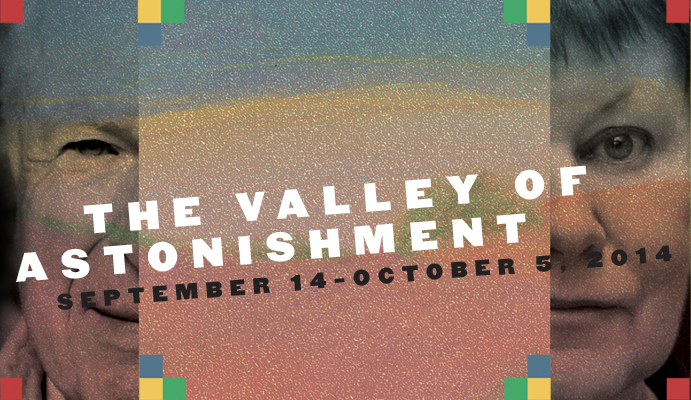














































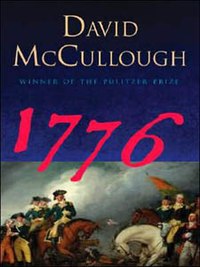














 点击查看大图
点击查看大图 内容简介
内容简介








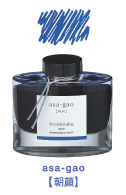














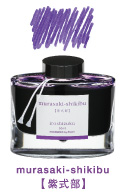
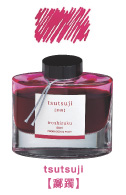
















 作 者:
作 者:


















